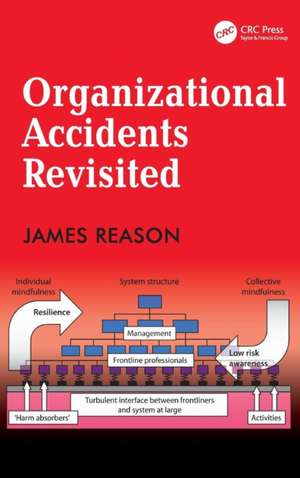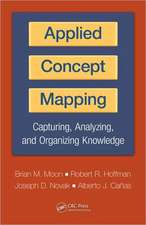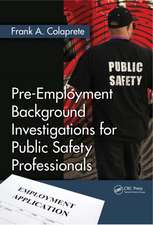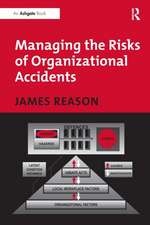Organizational Accidents Revisited
Autor James Reasonen Limba Engleză Hardback – 16 dec 2015
| Toate formatele și edițiile | Preț | Express |
|---|---|---|
| Paperback (1) | 370.28 lei 3-5 săpt. | +17.48 lei 7-13 zile |
| CRC Press – 16 dec 2015 | 370.28 lei 3-5 săpt. | +17.48 lei 7-13 zile |
| Hardback (1) | 999.46 lei 6-8 săpt. | |
| CRC Press – 16 dec 2015 | 999.46 lei 6-8 săpt. |
Preț: 999.46 lei
Preț vechi: 1218.86 lei
-18% Nou
Puncte Express: 1499
Preț estimativ în valută:
191.30€ • 198.96$ • 160.31£
191.30€ • 198.96$ • 160.31£
Carte tipărită la comandă
Livrare economică 13-27 martie
Preluare comenzi: 021 569.72.76
Specificații
ISBN-13: 9781472447654
ISBN-10: 1472447654
Pagini: 160
Ilustrații: Includes 7 b&w illustrations
Dimensiuni: 156 x 234 x 11 mm
Greutate: 0.43 kg
Ediția:2 New ed.
Editura: CRC Press
Colecția CRC Press
ISBN-10: 1472447654
Pagini: 160
Ilustrații: Includes 7 b&w illustrations
Dimensiuni: 156 x 234 x 11 mm
Greutate: 0.43 kg
Ediția:2 New ed.
Editura: CRC Press
Colecția CRC Press
Public țintă
Academic and Professional Practice & DevelopmentCuprins
Introduction; Part 1: Refreshers; The "Anatomy’ of an Organizational Accident; Error-Enforcing Conditions; Part 2: Additions Science 1977; Safety Management Systems; Resident Pathogens; Ten Case Studies of Organizational Accidents; Foresight Training; Alternative Views; Retrospect and Prospect; Taking Stock; Heroic Recoveries
Notă biografică
James Reason is Professor Emeritus of Psychology at the University of Manchester, England. He is consultant to numerous organizations throughout the world, sought after as a keynote speaker at international conferences and author of several renowned books including Human Error (CUP, 1990), The Human Contribution (Ashgate, 2008) and A Life in Error (Ashgate, 2013).
Descriere
Organizational Accidents Revisited extends and develops the ideas introduced in Managing the Risks of Organizational Accidents, using a standardised causal analysis of some 10 organizational accidents that have occurred in a variety of domains in the nearly 20 years that have passed since the original was published. These analyses provide the ’raw data’ for the process of drilling down into the underlying causal pathways. Many contributing latent conditions recur in a variety of domains. A number of these - organizational issues, design, procedures and so on - are examined in close detail in order to identify likely problems before they combine to penetrate the defences-in-depth. The book concludes by advocating that system safety should require the integration of systemic factors (collective mindfulness) with individual mental skills (personal mindfulness).













